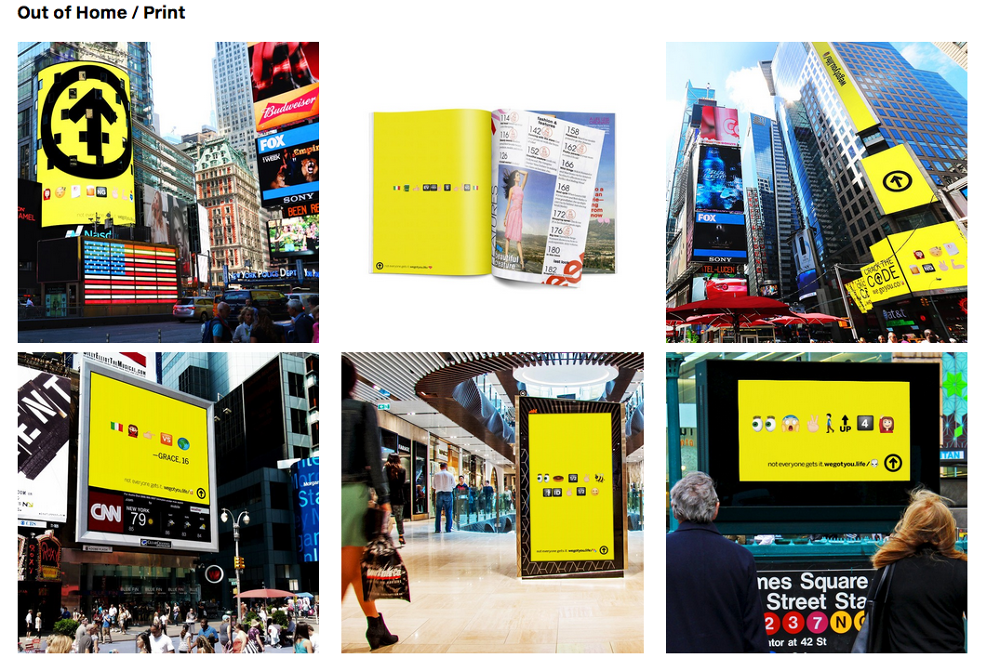#WeGotYou — The world’s first emoji-only anti-drug PSA campaign

Evaluations of the National Youth Anti-Drug Media Campaign, have been increasingly sobering: one analysis found that ads had no effect on kids' marijuana use or intentions to use, and may have even increased a desire to smoke pot among some kids.



Insight
Being a teen is about gaining self-awareness, yet ultimately they measure themselves against peers.
Esteem is everything for teens. Their happiness is innately tied to feeling part of something bigger like a group. Positive self-esteem comes from being comfortable or know they can recover from mistakes when learning to make choices.
Esteem is everything for teens. Their happiness is innately tied to feeling part of something bigger like a group. Positive self-esteem comes from being comfortable or know they can recover from mistakes when learning to make choices.


We sought to enable teens’ esteem by helping them fight influences honestly.
Strategy
An ATI campaign that’s purely traditional advertising wouldn’t do enough to help build teen’s esteem nor enable them to rise above the influences. ATI needed evolve into a mindset platform where teens have the tools to feel better about themselves through positive decision-making.
This fundamentally shifted our work beyond TV, activating utility and participation closer to real moments of influence, when teen need help the most. We sought to enable teens' esteem by helping them fight influences honestly.
The best way to co-exist in teens’ lives was not a single piece of content, rather lots of little things within their everyday worlds, so teens could respond to what spoke to them.
The first part of the campaign featured a cryptic string of emoji characters appearing in print, online, in theaters, and even on billboards in New York's Times Square.
Linguistically emojis were the perfect fit for our audience – today’s teen slang. It’s an authentic voice of teens -- ideal to deliver an empowering message rather than a fear tactic.
This fundamentally shifted our work beyond TV, activating utility and participation closer to real moments of influence, when teen need help the most. We sought to enable teens' esteem by helping them fight influences honestly.
The best way to co-exist in teens’ lives was not a single piece of content, rather lots of little things within their everyday worlds, so teens could respond to what spoke to them.
The first part of the campaign featured a cryptic string of emoji characters appearing in print, online, in theaters, and even on billboards in New York's Times Square.
Linguistically emojis were the perfect fit for our audience – today’s teen slang. It’s an authentic voice of teens -- ideal to deliver an empowering message rather than a fear tactic.